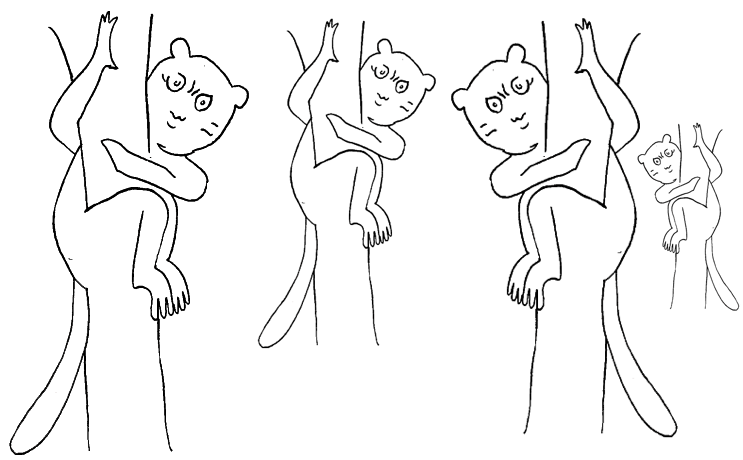
世界システム
World-system

☆ 世界システム(world-system) とは、システム理論における社会経済システムであり、地球の一部または全体を網羅し、国家間の相互作用の総和としての構造的結果を詳細に説明するものであ る。世界システムは通常、単一国家よりも規模が大きいものの、必ずしもグローバルである必要はない。ウェストファリアシステムは、現代世界で機能している 卓越した世界システムであり、1648年のウェストファリア条約によって生み出された主権国家および国民国家のシステムを指す。複数の世界システムが共存 することは可能であり、その場合、それらの世界システムが相互にほとんど、あるいはまったく影響を及ぼさないことが条件となる。そうした相互の影響が大き くなると、個々の世界システムはより大きな新たな世界システムへと統合されていく。グローバル化のプロセスを通じて、現代の世界は一つの支配的な世界シス テムの状態に達したが、人類の歴史においては、個々の世界システムが同時に存在した時代もあったとジャネット・アブー・ルゴッドは述べている。世界システ ム論の最も有名なバージョンは、イマニュエル・ウォーラーステインによって開発された。世界システムとは、世界史と社会変動に対する学際的かつマクロなア プローチである世界システム理論の重要な要素である。
| A world-system
is a socioeconomic system, under systems theory, that encompasses part
or all of the globe, detailing the aggregate structural result of the
sum of the interactions between polities. World-systems are usually
larger than single states, but do not have to be global. The
Westphalian System is the preeminent world-system operating in the
contemporary world, denoting the system of sovereign states and
nation-states produced by the Westphalian Treaties in 1648. Several
world-systems can coexist, provided that they have little or no
interaction with one another. Where such interactions becomes
significant, separate world-systems merge into a new, larger
world-system. Through the process of globalization, the modern world
has reached the state of one dominant world-system, but in human
history there have been periods where separate world-systems existed
simultaneously, according to Janet Abu-Lughod. The most well-known
version of the world-system approach has been developed by Immanuel
Wallerstein. A world-system is a crucial element of the world-system
theory, a multidisciplinary, macro-scale approach to world history and
social change. |
世界
システムとは、システム理論における社会経済システムであり、地球の一部または全体を網羅し、国家間の相互作用の総和としての構造的結果を詳細に説明する
ものである。世界システムは通常、単一国家よりも規模が大きいものの、必ずしもグローバルである必要はない。ウェストファリアシステムは、現代世界で機能
している卓越した世界システムであり、1648年のウェストファリア条約によって生み出された主権国家および国民国家のシステムを指す。複数の世界システ
ムが共存することは可能であり、その場合、それらの世界システムが相互にほとんど、あるいはまったく影響を及ぼさないことが条件となる。そうした相互の影
響が大きくなると、個々の世界システムはより大きな新たな世界システムへと統合されていく。グローバル化のプロセスを通じて、現代の世界は一つの支配的な
世界システムの状態に達したが、人類の歴史においては、個々の世界システムが同時に存在した時代もあったとジャネット・アブー・ルゴッドは述べている。世
界システム論の最も有名なバージョンは、イマニュエル・ウォーラーステインによって開発された。世界システムとは、世界史と社会変動に対する学際的かつマ
クロなアプローチである世界システム理論の重要な要素である。 |
| Characteristics World-systems are defined by the existence of a division of labor. The modern world-system has a multi-state political structure (the interstate system) and therefore its division of labor is international division of labor. In the modern world-system, the division of labor consists of three zones according to the prevalence of profitable industries or activities: core, semiperiphery, and periphery. Countries tend to fall into one or another of these interdependent zones core countries, semi-periphery countries and the periphery countries.[1][2] Resources are redistributed from the underdeveloped, typically raw materials-exporting, poor part of the world (the periphery) to developed, industrialized core. World-systems, past world-systems and the modern world-system, have temporal features. Cyclical rhythms represent the short-term fluctuation of economy, while secular trends mean deeper long run tendencies, such as general economic growth or decline.[3] The term contradiction means a general controversy in the system, usually concerning some short term vs. long term trade-offs. For example, the problem of underconsumption, wherein the drive-down of wages increases the profit for the capitalists on the short-run, but considering the long run, the decreasing of wages may have a crucially harmful effect by reducing the demand for the product. The last temporal feature is the crisis: a crisis occurs, if a constellation of circumstances brings about the end of the system. The world-systems theory stresses that world-systems (and not nation states) should be the basic unit of social analysis.[2][3] Thus, we should focus not on individual states, but on the relations between their groupings (core, semi-periphery, and periphery). |
特徴 世界システムは分業の存在によって定義される。現代の世界システムは多国家による政治構造(国家間システム)であり、その分業は国際分業である。現代の世 界システムにおける分業は、利益を生む産業や活動の普及率に従って、コア、セミペリフェリー、ペリフェリーの3つのゾーンに分けられる。各国は、これらの 相互依存的なゾーンである中核国、半周縁国、周縁国のいずれかに分類される傾向がある。[1][2] 資源は、一般的に原材料を輸出する世界の低開発地域(周縁)から、先進国や工業化された中核地域へと再分配される。 世界システム、過去のシステム、現代の世界システムには、時間的な特徴がある。循環的なリズムは経済の短期的な変動を表し、長期的な傾向は、一般的な経済 成長や衰退といったより長期的な傾向を意味する。[3] 矛盾という用語は、システムにおける一般的な論争を意味し、通常は短期的なものと長期的なもののトレードオフに関するものである。例えば、消費不足の問題 では、賃金が低下することで資本家は短期的には利益を増やすが、長期的には賃金の低下が製品の需要を減らすことで致命的な悪影響を及ぼす可能性がある。最 後の時間的特徴は危機である。状況の集合がシステムの終焉をもたらす場合、危機が発生する。 世界システム論は、社会分析の基本単位は国民国家ではなく世界システムであるべきだと強調している。[2][3] したがって、個々の国家ではなく、それらのグループ(中心、半周縁、周縁)間の関係に焦点を当てるべきである。 |
| Immanuel Wallerstein The most well-known version of the world-system approach has been developed by Immanuel Wallerstein, who has provided several definitions of what a world-system is, twice in 1974, first "...a system is defined as a unit with a single division of labor and multiple cultural systems."[4] and second as "…a social system, one that has boundaries, structures, member groups, rules of legitimation, and coherence."[5] In 1987, he elaborated his definition: "...not the system of the world, but a system that is a world and which can be, most often has been, located in an area less than the entire globe. World-systems analysis argues that the units of social reality within which we operate, whose rules constrain us, are for the most part such world-systems [...]. ...there have been thus far only two varieties of world-systems: world-economies and world empires. A world-empire (examples, the Roman Empire, Han China) are large bureaucratic structures with a single political center and an axial division of labor, but multiple cultures. A world-economy is a large axial division of labor with multiple political centers and multiple cultures."[3] Thus, we can differentiate world-systems into politically unified (world-empires) and not unified (world-economies).[2] Small, non-state units such as tribes are micro-systems.[2] |
イマニュエル・ウォーラーステイン 世界システム・アプローチの最もよく知られたバージョンは、イマニュエル・ウォーラーステインによって開発されたもので、彼は世界システムとは何かについて、1974年に2度にわたっていくつかの定義を提示している。 「...システムとは、単一の分業と複数の文化システムを持つ単位として定義される」[4] そして2度目は 「...境界、構造、構成員集団、正統性の規則、そして一貫性を持つ社会システム」[5] 1987年には、彼は自身の定義をさらに詳しく説明している。 「...世界のシステムではなく、世界そのものであるシステムであり、通常は地球全体ではなく、その一部の地域に位置している。世界システム分析では、我 々が活動し、そのルールに縛られている社会的な現実の単位は、ほとんどがこのような世界システムであると主張している...。...これまでに存在した世 界システムは、世界経済と世界帝国の2種類のみである。世界帝国(例:ローマ帝国、漢王朝)は、単一の政治的中心と軸上の分業、しかし複数の文化を持つ大 規模な官僚的構造である。世界経済は、複数の政治的中心と複数の文化を持つ大規模な軸上の分業である。」[3] したがって、世界システムを政治的に統一されたもの(世界帝国)と統一されていないもの(世界経済)に区別することができる。[2] 種族のような小規模な非国家単位はミクロシステムである。[2] |
| World system vs. world-system(s) World system refers to the entire world, whereas world-system is its fragment - the largest unit of analysis that makes sense.[2] Wallerstein stresses the importance of hyphen in the title: "... In English, the hyphen is essential to indicate these concepts. "World system" without a hyphen suggests that there has been only one world-system in the history of the world."[3] There is an ongoing debate among scholars whether we can talk about multiple world-systems. For those who support the multiple world-systems approach,[6] there have been many world-systems throughout worlds history, some replacing others, as was the case when a multipolar world-system of the 13th-14th centuries was replaced by a series of consecutive Europe- and the West-centered world-systems.[7] Others coexisted unknowingly with others, not linked to them directly or indirectly; in those cases the world-systems weren't worldwide (for example, prior to colonization of Americas, the Americas world-systems had no connection with the one encompassing Eurasia and Africa).[8] From around 19th century onward, due to the process of globalization, many scholars agree that there has been only one world-system, that of capitalism.[9][10] There are, however, dissenting voices, as some scholars do not support the contention that there is only one world-system in the modern day;[11] Janet Abu-Lughod states that multiple world-systems did exist in past epochs.[12] The alternative approach insists that there was only one World System that originated in the Near East five[13] or even ten[14] thousand years ago, and gradually encompassed the whole world; thus, the present-day truly global World System can be regarded as its continuation. |
世界システム vs. 世界システム(複数形) 世界システムは全世界を指すが、世界システム(複数形)は、その断片、すなわち意味をなす最大の分析単位である。[2] ウォーラーステインは、タイトルのハイフンの重要性を強調している。 「英語では、これらの概念を示すにはハイフンが不可欠である。ハイフンなしの『世界システム』という表現は、世界の歴史において世界システムは1つだけだったことを示唆している。」[3] 複数の世界システムについて語ることができるかどうかについては、学者の間で現在も議論が続いている。複数の世界システムのアプローチを支持する人々 [6]にとっては、世界の歴史を通じて多くの世界システムが存在し、ある世界システムが別の世界システムに取って代わることもあった。例えば、13世紀か ら14世紀にかけての多極的世界システムが、ヨーロッパおよび西欧中心の世界システムに次々と取って代わられたようにである。[7] また、ある世界システムが別の世界システムと知らず知らずのうちに共存し、直接的にも間接的にも関連を持たないこともあった。 直接または間接的にそれらとつながりを持たず、知らず知らずのうちに共存していた。そのような場合、世界システムは世界的なものではなかった(例えば、ア メリカ大陸植民地化以前には、アメリカ大陸の世界システムはユーラシアとアフリカを包括する世界システムとは何のつながりも持っていなかった)。[8] 19世紀以降、グローバル化のプロセスにより、多くの学者が 世界システムは資本主義のそれ一つだけだったという見解に多くの学者が同意している。[9][10] しかし、一部の学者は現代に世界システムは一つだけという主張を支持しておらず、異論もある。[11] ジャネット・アブラハム・ルーゴッドは、過去の時代には複数の世界システムが存在していたと述べている。[12] 代替的なアプローチでは、5,000年[13]あるいは1万[14]年前に中東で始まり、徐々に全世界を包含していった世界システムは1つだけだったと主張している。したがって、今日の真のグローバルな世界システムは、その継続とみなすことができる。 |
| https://en.wikipedia.org/wiki/World-system | |
リ ンク
文 献
そ の他の情報
Copyleft, CC, Mitzub'ixi Quq Chi'j, 1996-2099
☆
 ☆
☆